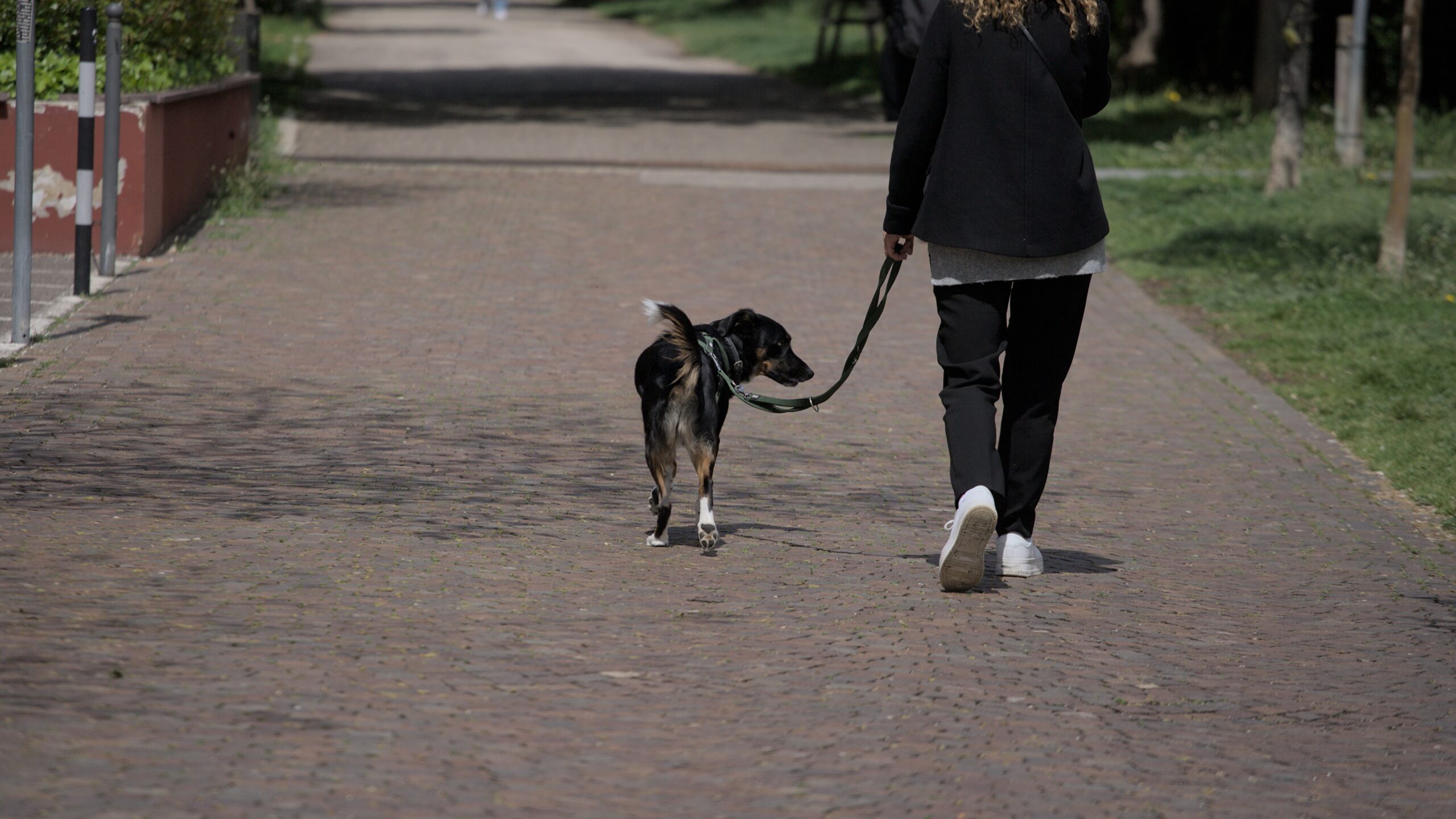
From pepper spray to alarm key chains, there are many self-defense tools for women. But one often overlooked way women can protect themselves when they are out and at home is with a dog. That’s right: It’s the other “D” word that’s really a woman’s best friend. Your canine companion can be an extra layer of defense, according to Joy Farrow, former deputy sheriff and coauthor of the new book, Street Smart Safety for Women: Your Guide to Defensive Living.
“Your dog’s safety intuition is the same as yours — it is their five senses alerting them to danger,” says Farrow. “They may be able to pick up on small micro-expressions of danger that you may not: Smells, posture, facial expressions. Dogs also don’t have their safety intuition socialized out of them, as human women have. As the result, they will immediately react to danger if they sense it. As the old saying goes: ‘I don’t trust people who don’t like dogs, but I trust dogs who don’t like a person.’ It’s been our experience with a number of dogs that they are generally very good at perceiving threats to their people. Dogs can also sense if someone is afraid of them, but we’ve observed that the dog is generally more curious about that person, not threatened.”
Farrow says, “Your dog’s behavior will definitely change when they perceive danger.”
Although each dog is unique, here are some indicators to look for, according to Farrow:
- Focused staring: “Eyes lock on what/whoever appears threatening. Our dog once stared at a home visitor for three hours. This was the only time she exhibited this behavior.”
- Alert or attention posture: “Their ears will move to the ‘alert’ position, their head will perk up and their eyes will be focused instead of relaxed.”
- Displaying teeth: “They may show their teeth in some way, even if only one side of their lip curls.”
- Barking or growling: “An intense bark or low-throated growl can indicate that they perceive a threat.”
- Raised hackles: “The fur along their spine may stand up, similar to the hair on the back of your head standing up.”
- Lunging or retreating: “They may lunge toward a perceived threat or retreat from one. For example, if they’re normally friendly but walk away from a person, I wouldn’t have that person dog sit or even come in the house if it could be avoided.”
These indicators apply both at home and outside the home.

But of course, when dogs are inside their own territory, they will show additional signs as they guard and protect. “Many dogs bark when they hear something out of the ordinary,” says Farrow. “When you hear them barking, investigate. It may just be the neighbor or UPS driver, but it could be something or someone else. A dog’s bark when they hear a predator is typically more intense as opposed to a neighbor walking their own dog.”
Predators will fear what they hear. “If they hear a dog barking or see a dog, they don’t know what they may be getting themselves into, and could move on to your neighbor’s house where they don’t have a dog to contend with,” says Farrow. “One of us had a situation where a predator was trying to break into our home, knowing that a single woman was there alone. When the dog lying on the floor got up and looked out the window at the predator, he took off. The dog never had to bark.”

If you are a single woman or out alone with your dog, Farrow says, “Stay in lit areas where you can see around you. Your dog can alert you, but can’t communicate whether the ‘threat’ is a rabbit, coyote or human.”
Laura Fromback, domestic violence survivor and coauthor of Street Smart Safety for Women, urges women to carry defensive tools, even if they have a dog, as part of a layered defense plan.
- Bear spray: “Strong pepper spray that will shoot a stream about 25 feet, enough to stop an attacker (four-legged or two-legged) long before they get to you. We carry it all the time.”
- Small flashlight: “Five-inch, bright light, powers on in the back with your thumb. You can wrap your hand around it. Shine it in predator’s eyes unexpectedly. Can also be used in daylight as the bright light will momentarily disorient them.”
- Tactical pen: “Pen that writes but is made of airplane metal and has a point sharp enough to break a car window, or use as a defensive weapon. These are available online.”

Women should also be wary of predators disguised as dog lovers and watch out for those who linger too long while conversing with you about your pet. “This is where you draw the line between being polite and being safe,” says Farrow. “You can say hello and chat for a minute, then continue on your walk. If they persist, be blunt and tell them to leave.” Farrow suggests women use wearable technology, “so you can discretely press a panic button, alerting family and showing your GPS position.”
If someone asks where you live, Farrow says, “Just because someone asks, doesn’t mean that you have to answer their questions. You can still be friendly and not disclose personal information. If you want to make a joke about it, tell them you and your dog are in the witness protection program.”

That same mindset applies to strangers in your house, such as construction workers or people making deliveries. “You don’t have to tell them if your dog is friendly or bites,” says Farrow. “If they ask, you can tell them that your dog can be unpredictable but is under control because you (owner) are here.”




